Best Survival Lighter for Reliable Fire-Starting
This is an updated review of the best survival lighter. We update our roundups as new products are released and as we test even more lighters.
A lighter is a simple but important tool for survival. Staying warm and dry, creating light, purifying water, and cooking food can all be done with a humble lighter. There are plenty of brands and models to pick from when you consider lighters for survival.
This is where we come in. We’ve researched the best survival lighters, tested them, and now the results are in: the overall best, a starter option, and an upgrade option. If you need a reliable lighter in a survival situation, one of our picks will bring the heat.
Contents (Jump to a Section)
The Best Survival Lighter
Windproof Arc Lighter
Weatherproof, Rechargeable, and Dependable
Arc lighters have dropped significantly in cost making them the new survival lighter to beat.
*Price at time of publishing; check for price changes or sales.
Charging technology and batteries have come a long way over the years. When the first weatherproof arc lighter emerged on the scene several years ago, they cost over $30. They also were saddled with a lower watt-hour battery and limited by micro-USB.
Fast forward to today, and we have inexpensive arc lighters that perform fantastically in any weather conditions. Paired with a wide range of options to recharge through the USB-C cable on the go, you can use this lighter almost indefinitely.
Here is how it measures up:
- 196 (one-second lights)
- 18 Wh (1.5-hour recharge with USB-C)
- 2.7″ x 1.9″ x 0.5″
- 1.5 ounces
If you are looking for the best option for your survival kits, a Weatherproof Arc Lighter is what you need.
Budget Survival Lighter
BIC Classic
Simple, Inexpensive, and Dependable
The classic BIC perseveres as the dependable prepping option at home or in your everyday carry.
*Price at time of publishing; check for price changes or sales.
The classic BIC has been hanging around convenience stores since 1973. The disposable lighters are dirt cheap, and although they no longer have adjustable flames due to safety concerns, they are still infinitely customizable.
Many pocket survival kits use the humble BIC as a base, wrapping tape and cordage around the handle and adding other accessories like razor blades to pack some versatility in your pocket.
Here are the specs on the classic model:
- 10-pack
- 3,000 (one-second lights)
- Isobutane (non-refillable without modification)
- 3.25″ x 1″ x 0.5″
- 0.77 ounces (full)
If you are stocking bulk lighters or running a simple solution for your everyday carry, it’s still tough to beat the price of a BIC Classic lighter.
Upgrade Survival Lighter
SOTO Pocket Torch
Dual Fuel, Refillable, and Reliable
This lighter massively upgrades ordinary disposables into jet torches and extends their life.
*Price at time of publishing; check for price changes or sales.
SOTO may be mildly obsessed with blue flames, from their innovative Japanese stoves and now their unparalleled lighter out of Japan. This unique jet torch cannibalizes your cheap disposables for fuel and turns them into a hot and efficient monster.
With a flame topping out at 2300°F (1300°C), you can even solder with this beast just by loading it with a disposable.
Here are the specs on this versatile torch:
- 4,800 (one-second lights)
- Encapsulates disposable lighters for fuel
- Direct butane adapter available: SOTO Butane Adapter
- 4.3″ x 2.4″ x 0.9″
- 1.8 ounces (full)
If you are looking for the best refillable lighter, you can’t match the SOTO Pocket Torch.
Everything We Recommend
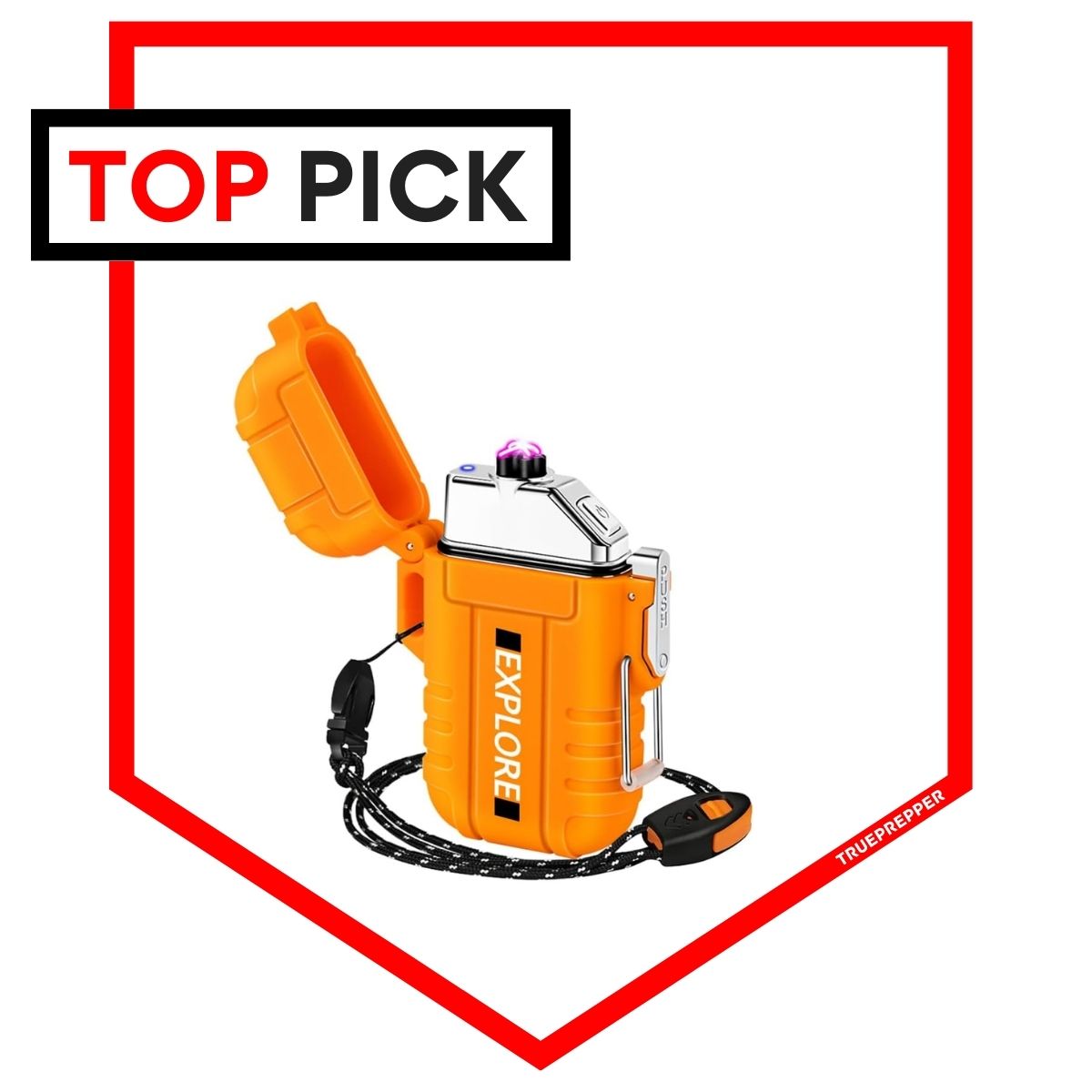
Arc lighters have dropped significantly in cost making them the new survival lighter to beat.
Where to Buy
*at time of reviewing
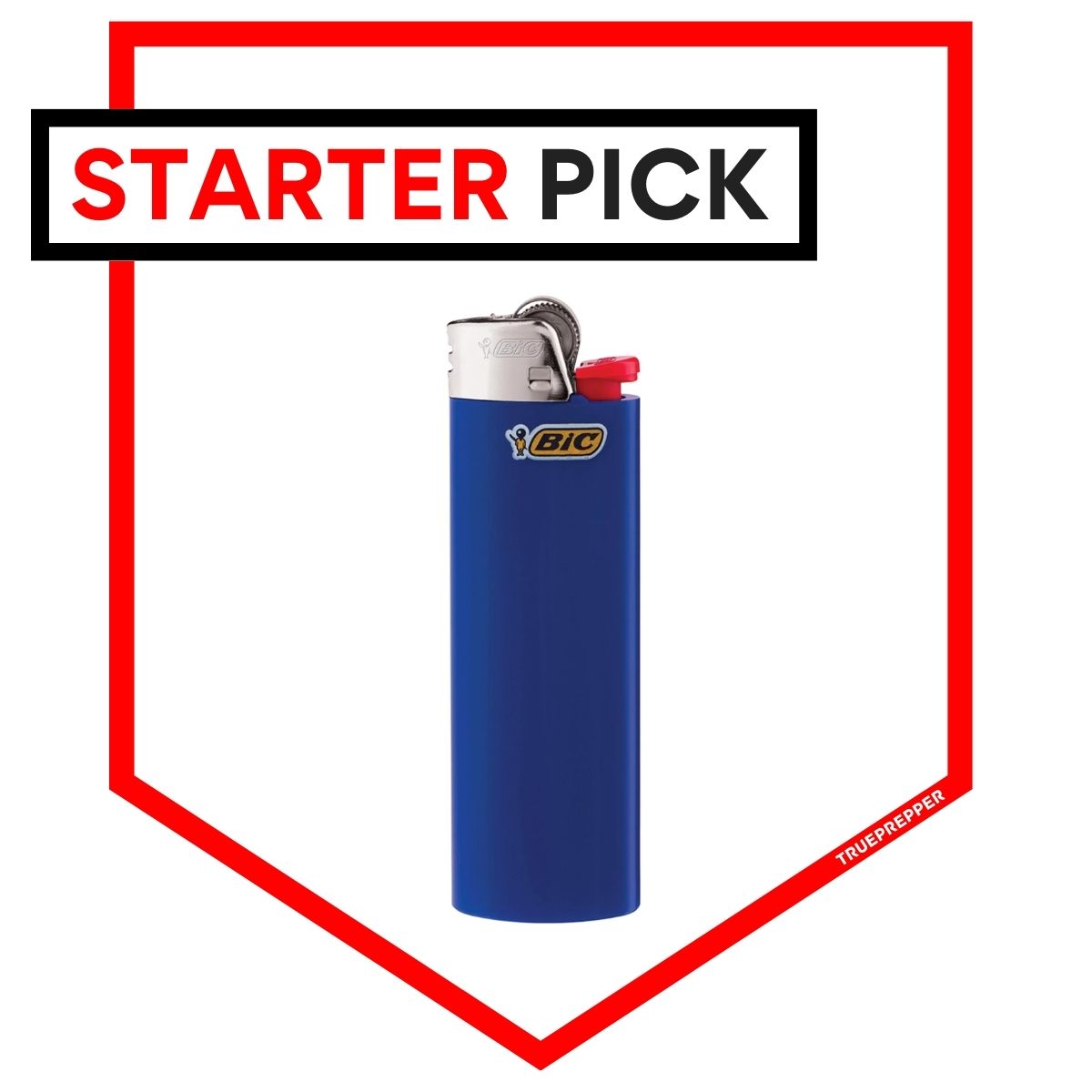
The classic BIC perseveres as the dependable prepping option at home or in your everyday carry.
Where to Buy
*at time of reviewing
The Lighters We Compared
Our research narrowed the field down to several types of lighters that we compared: BIC, UST, Coleman, SOL, Exotac, Zippo, SOTO, Maratac, Vertigo, Clipper, and more.
You can see our full list of review criteria below in the What to Look For section, with an explanation for each. The Zippos had some issues with evaporation and butane lighters simply didn’t have the longevity to justify the weight.
We’re always looking for new and better gear, so if you have a lighter that performs well for you, let us know in the comments. We review most of our tested gear annually so we can try to get it in the next roundup round and see if it will beat out our top picks.
What to Look For
The best survival lighters have a few features to look for:
- Value
- Fuel Type
- Reliability
- Size/Weight
- Versatility
When you get the right blend of these, you can find the perfect lighter to start a fire when your life depends on it. Below, we break down what each of these features means for the types that truly set themselves apart.
Value: Cost vs. Benefit
The amount of money you spend on something like a lighter shouldn’t blow out your entire budget. They are not especially expensive and you probably already have some in your junk drawer.
You never want to spend too much money on one resource, even when it comes to fire tools. It’s better to diversify your spending to make sure you are covered for a wide range of scenarios.
Fuel Type
There are many types of fuel to turn a spark into a flame, but superheated air between two contacts performed the best. Sure, there are some drawbacks to arc plasma lighters but the potential longevity is hard to overlook.
Traditional gas and liquid fuels are common, including:
- isobutane
- butane
- propane
There are also a few wick lighters and match-strike options out there, but they weren’t worth the hassle with the better options readily available.
Reliability
When you use a lighter, you want a flame. If it can’t produce a flame due to rain, wind, cold, or other conditions then you’ve got yourself a paperweight and not a lighter.
Older models of plasma arc lighters had some issues with cold weather (batteries don’t like it), but that seems to have improved from what we saw and more recent reviews.
Just like matches, tinder, and other fire-starting supplies- you’ll want to keep your lighter close and dry anyways for the best performance.
Size & Weight
If it wasn’t for size and weight issues, you could just start every fire with a flamethrower. Small, lightweight, and storability all make for good lighter characteristics.
You also want to be aware of leakage potential when you store lighters with liquid fuel. I had a liquid fuel candle leak in my bug out bag once and it was a complete mess. Make sure the thumb button on your BIC can’t be pressed when you stash it.
Versatility
Some lighters are versatile beyond their flame. whether they can strike a spark even when they are empty or their housing is suited to be wrapped in cordage and tapes, lighters often are the cornerstones of versatile survival kits.
Keep an open mind when it comes to resourcefulness and you’ll be able to figure out a solution for nearly any situation.
How to Modify a Survival Lighter
There are many ways to modify lighters for survival, but one of the most popular platforms to start with is the simple BIC. Most modifications start with shoring up deficiencies, like weatherproofing, fuel limitations, and then expand into adding extra functionality.
Some of my favorite modifications include:
- Wrapping a lighter in waxed jute – bend the jute to light and use a flame extension to save fuel and access hard-to-reach spaces.
- Wrapping small strips of duct tape – tape is always useful in a wide variety of situations.
- Removing child safeties – get rid of the extra ring on top of a Bic and you can roll-start it and flick it easier.
- Weatherproofing – I like the FlameNest for the Bics.
Who Needs a Survival Lighter?
Lighters can be worth their weight in gold if you need a fire for survival. Everyone can use a lighter. A lighter’s uses for survival make for a long list.
You’ll find a lighter as an essential item in almost every survival kit:
If you find yourself with extras, you can always keep them around for lighting campfires, birthday candles, and more.
How We Review Products: We research thoroughly before selecting the best products to review. We have vast prepping and survival experience and bring in outside experts when needed. Hours on end are spent testing gear in stressful conditions and using specialized testing gear to verify claims. We assign performance criteria and impartially rate each tested item. Learn more about how we test.
Sources and References
All of our experience and the testing we do to determine the best survival lighter are useless without listing our research sources and references. We leaned on these for the book knowledge that we paired with our hands-on testing and practical survival experience:
Jae, J., et al. (2007). A Study on the Possibility of Ignition by Disposable Lighter. Journal of Korean Institute of Fire Investigation. Volume 10. Issue 1. Pages 59 – 75. (Source)
Mac Rae, D. (1989). Plasma arc process systems, reactors, and applications. Plasma Chemistry and Plasma Processing. Volume 9. Pages 85S – 118S. (Source)
Viscusi, W., et al. (2022). The Broad Impacts of Disposable Lighter Safety Regulations. Journal of Benefit-Cost Analysis; Cambridge University Press. Volume 13. Issue 2. Pages 149 – 165. (Source)
The Final Word
A lighter is cheap, lifesaving, and versatile. It’s one of the foundational pieces of any survival kit and it won’t be breaking any budgets.
Here are some other reviews and guides our subscribers have found helpful:
- Best Survival Tinder for Fire Starting
- The Best Ferro Rod for Survival Fire Starting
- Bug Out Bag List | 44 Essentials
We presented quite a lot of information, but as always: if you have any questions let us know and we would be happy to help. Our testing found the Windproof Arc Lighter to be the best solution given its value, fuel type, reliability, size/weight, and versatility.
Be safe by being smart.
You’ve Been Missing Out
Join the 2+ million preppers that rely on our prepping advice by subscribing to TruePrepper.- Practical guides and tips
- Useful survival giveaways
- Free, forever
- < 0.4% of people unsubscribe
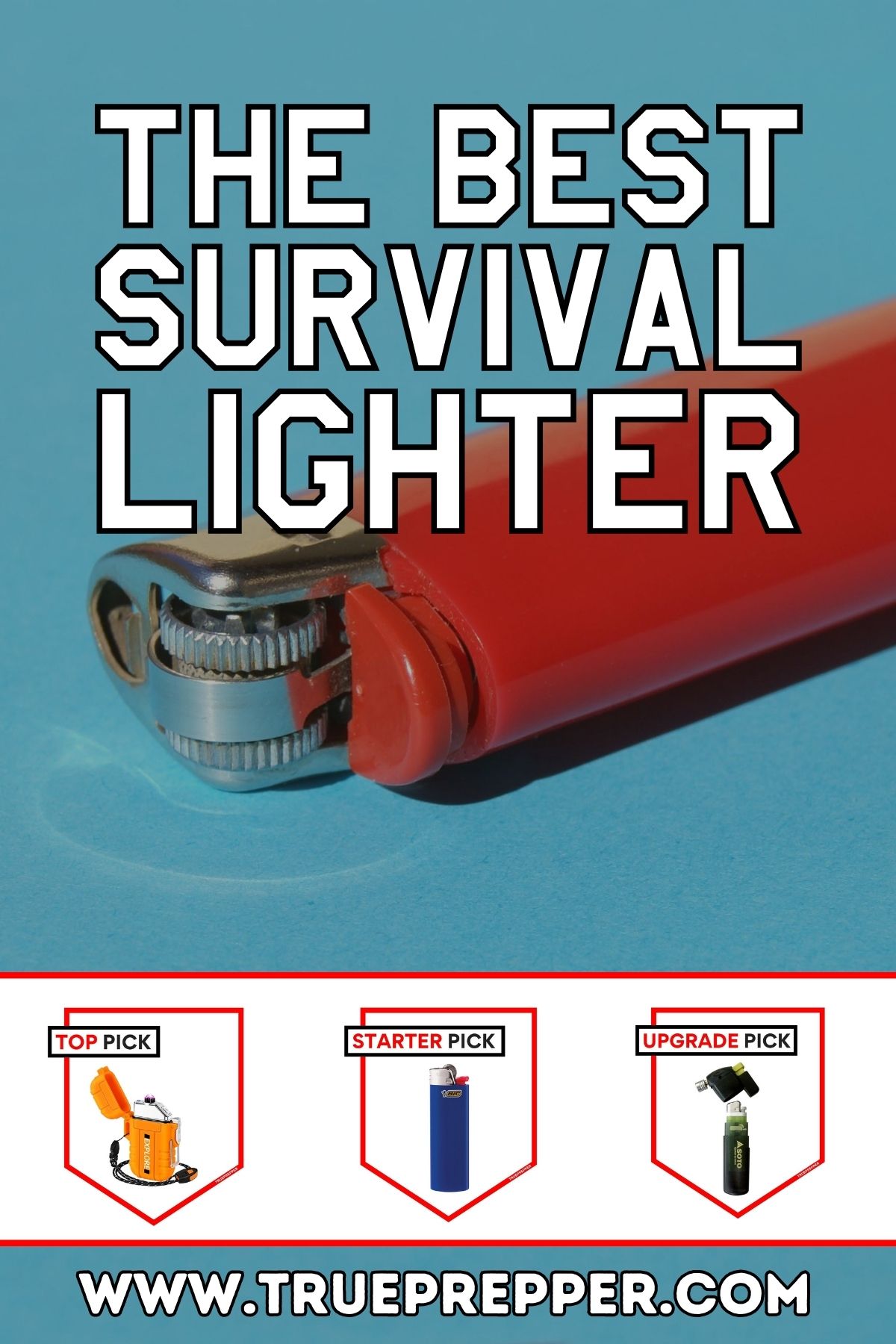

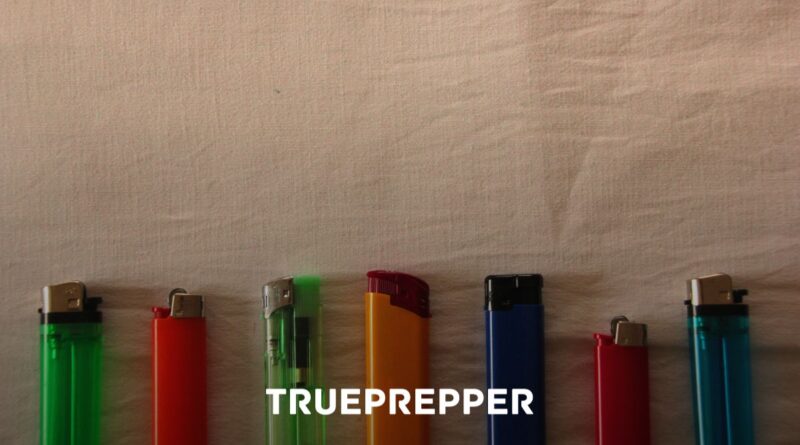
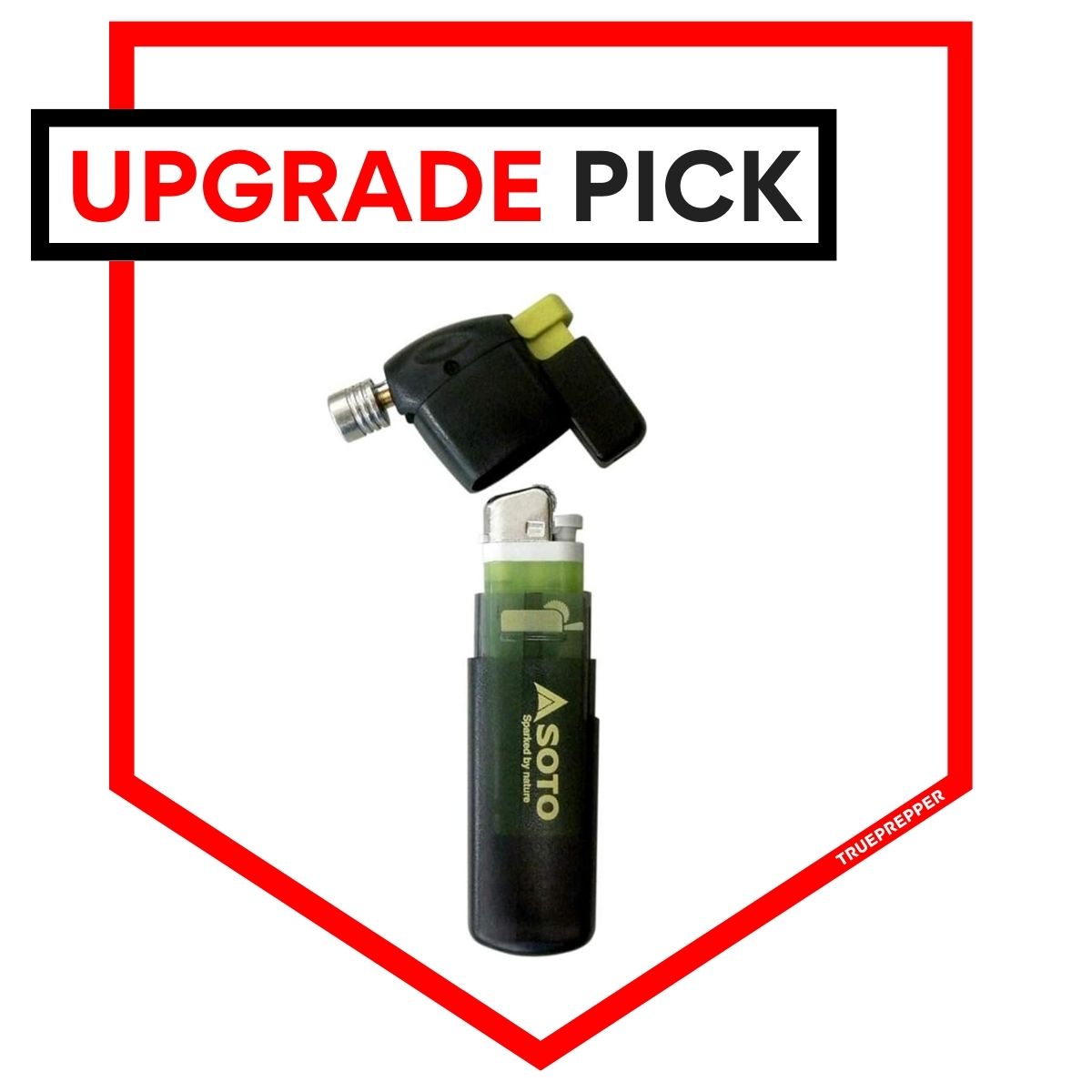
Just a note on the Bic lighters. As a guy who frequently winter camps, I’ve found they often won’t light when stored in my pack or a jacket pocket when it gets below freezing, and reliability gets worse as the temps drop further. While they will eventually light by warming them up with your breath, body heat, or by zipping the flint wheel over your leg a bunch of times, this can prove difficult if your hands are numb and you are already in dire need of a fire. I ALWAYS carry one in my front jeans pocket – your body heat in that pocket is just enough to prevent this, and it will light the first time every time as expected. I do carry plenty of spares in the pack (and BOB, BOV, cache(s), as well as alternate fire lighting means), but I always have one at the ready in my jeans pockets. I’ll also add forget about the other disposables! They aren’t worth the pennies saved – stick with the Bic brand for the best reliability.